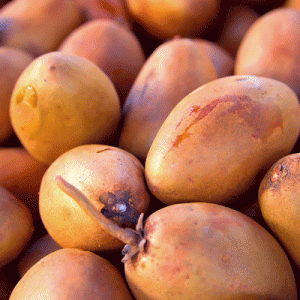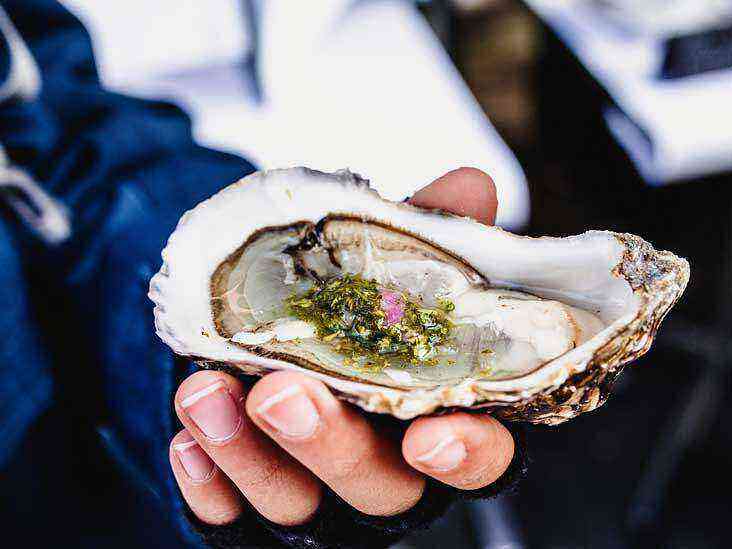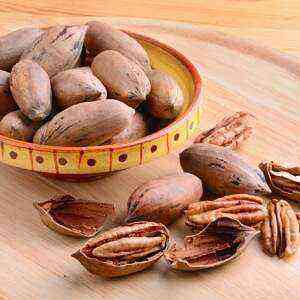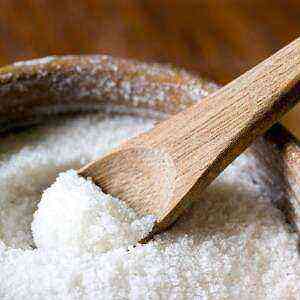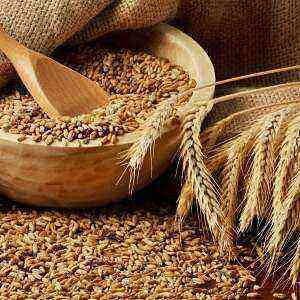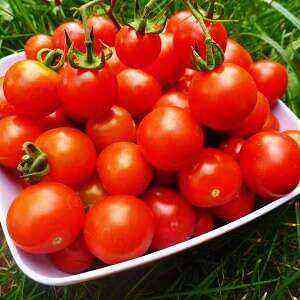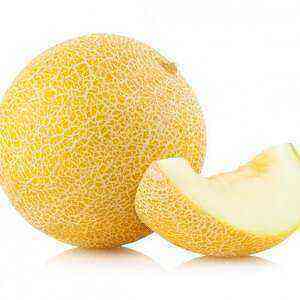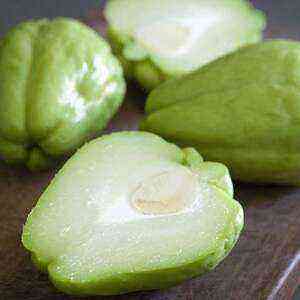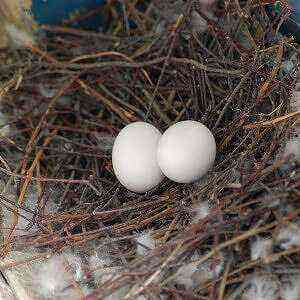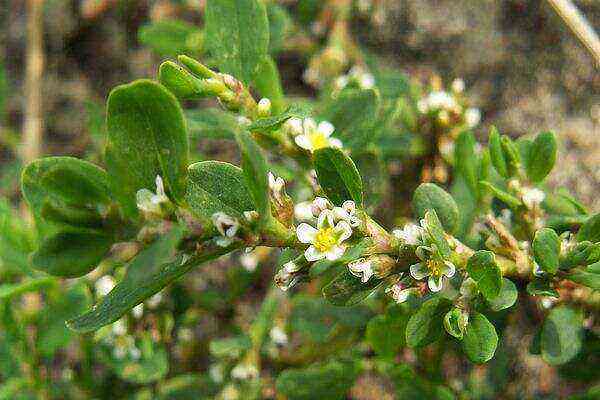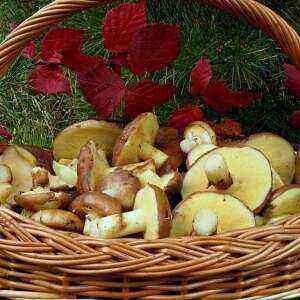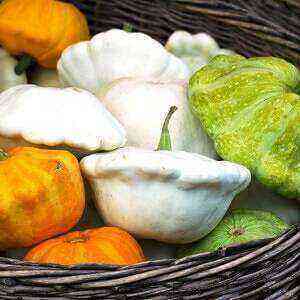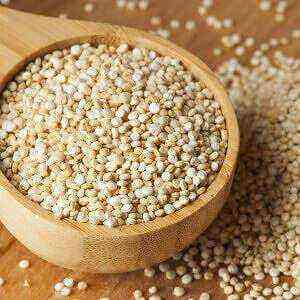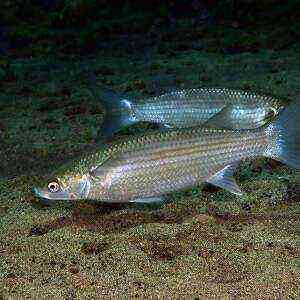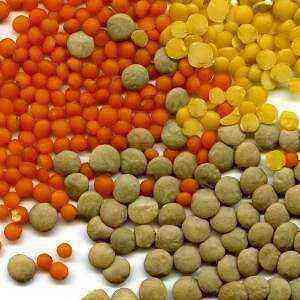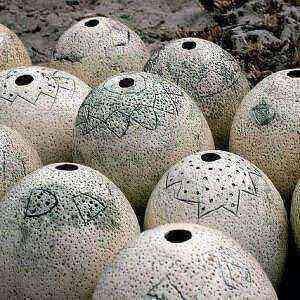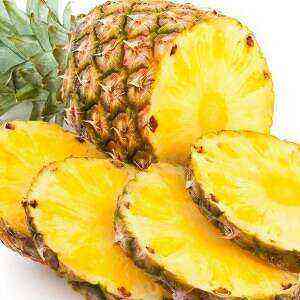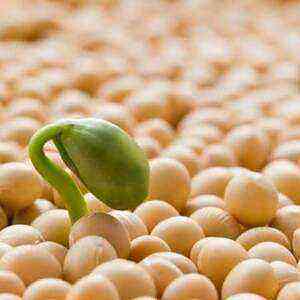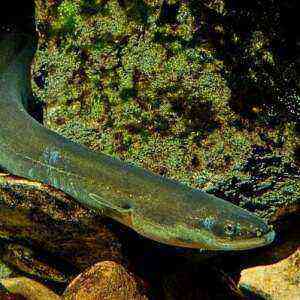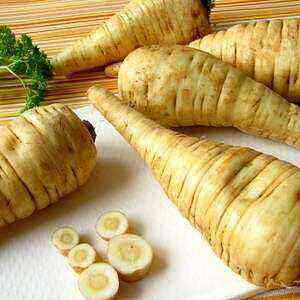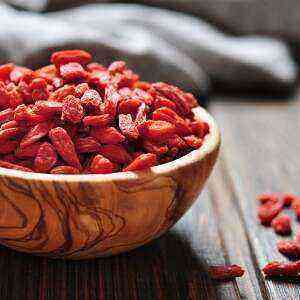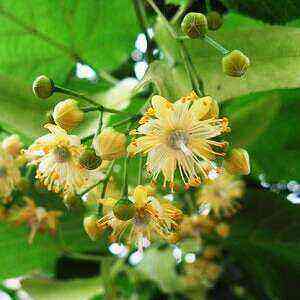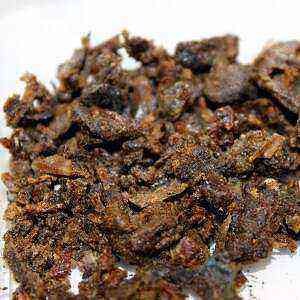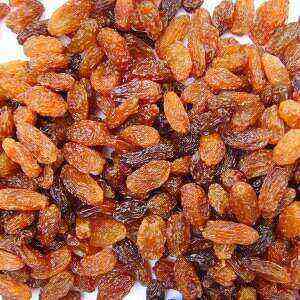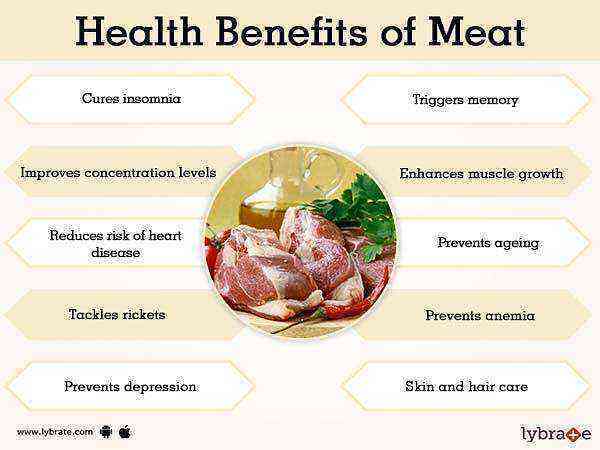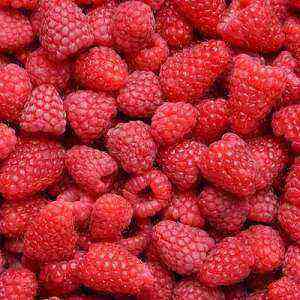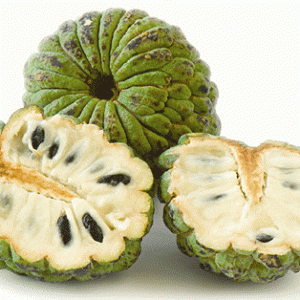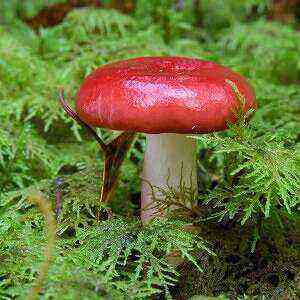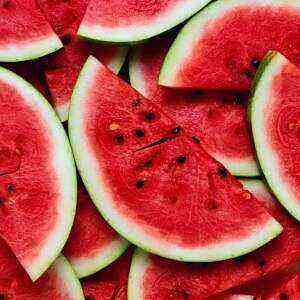
Interesting facts from the story
Watermelons belong to the pumpkin family. Grown in many tropical countries, where they are one of the main commercial fruit crops. The homeland of these delicious striped fruits is Southern Africa (Kalahari Desert). According to some assumptions – Brazil or Paraguay. It is there that wild cultivars grow in abundance. Over time, the plant has spread to other continents.
The first written mention of the harvest of watermelons appeared about 5000 years ago. Egyptologists have found this record among hieroglyphs. The Egyptians grew watermelons in the valley of the Nile, and then placed them in the burial tombs of the kings. The fruits, according to the ancients, should feed the departed in the afterlife.
Thanks to the merchants, these pumpkin spread along the shores of the Mediterranean. In the tenth century, they “migrated” to China, which today is included in the list of the largest watermelon producers. In the XIII century, the Moors brought fruit to Europe. In the United States of America, this fruit was probably brought together by African slaves. And by the way, it was in the USA that the first cookbook came out, containing a recipe for watermelon peel pickles. It happened in 1776 year. In 2005, residents of the US state of Arkansas entered the Guinness Book of Records as they grew the heaviest watermelon in the world. Its weight was 121,93 kg.
And what kind of fruit are you?
Probably, many of you have at least once wondered which category of products a watermelon belongs to: is it a vegetable or a berry, or maybe a fruit? On the one hand, everything is simple: sweet means fruit. But on the other side, 
In fact, representatives of the pumpkin family, oddly enough, but do not belong to the vegetables. At least scientifically. So the circle of doubt is narrowing. It remains to be understood: watermelon is a berry or fruit. Let’s not weary readers for a long time and immediately say the right answer. Watermelon – berry. Why berry? Because it fully meets the “berry” features. Has a fruit with firm skin, juicy pulp, a large number of seeds and develops from the ovary. By the way, from a botanical point of view, kiwi and tomatoes are also berries. But what is interesting, neither cherry nor raspberry belong to this group.
However, no matter how these biologists call these fruits, the taste of watermelons does not change. For centuries, they have remained the main summer treat for many. Let many do not even know which botanical category this plant belongs to.
General characteristics
Dark seeds against a background of bright watermelon crumb. This is approximately how the majority of the world’s population imagines this fruit. 
Today in the world there are about 1200 varieties of this plant, which are grown in more than 90 countries, including China, USA, Greece, Hungary, Bulgaria, Russia, Ukraine. Most often about fifty types of watermelons get to the markets. The most popular: Astrakhan (he is Bykovsky), Kamyshinsky, monastic, Kherson.
A few weeks after planting, large yellow flowers appear on the plants, and after pollination, fruits develop in their place. Curly stem usually reaches 3 meters. The color of the peel can be of different shades and with very different patterns (depending on the variety). The color and taste of the crumb is also determined by the variety. It can be red, pink or yellow, and in texture it is always crunchy, which is what distinguishes it from the creamy melon pulp.
The nutritional value
Watermelons are made up of water and carbohydrates. They almost do not contain protein and fat, and the number of calories is minimized. Almost 92 percent of the composition of the fetus is liquid. Each piece of this sweet treat contains a significant amount of minerals, vitamins A, C and group B, antioxidants, amino acids and phytonutrients. 100 grams of the product contains no more than 40 kilocalories, and watermelon seeds contain oil whose properties resemble almond.
Nutritional information per 100 g of product
Calories 25-40 Kcal Water 91-92% Proteins 0,6 g Carbohydrates 7,6 g Fats 0,2 g Vitamin A 28 μg Vitamin C 8,1 mg Vitamin E 50 μg Vitamin K 0,1 μg Vitamin B1 30 μg Vitamin B2 20 μg Vitamin B3 180 μg Vitamin B5 220 μg Vitamin B6 50 μg Folic acid 3 μg Choline 4,1 mg Calcium 7 mg Iron 0,24 mg Magnesium 10 mg Phosphorus 11 mg Potassium 112 mg Sodium 1 mg Zinc 0,1 mg Copper 0,04 mg Manganese 0,04 mg Selenium 0,4 μg
Carbohydrates
The average carbohydrate content in 100 g of watermelon is approximately 7-7,5 g. Mostly, these are monosaccharides (fructose, glucose, sucrose). The glycemic index for this product is quite high – 72-80. However, given that relatively few carbohydrates are contained in one serving of watermelon, fetal intake will not significantly affect blood sugar levels.
Vitamins and minerals
These fruits are an excellent source of many other beneficial ingredients:
- vitamin C (an antioxidant necessary for skin health and immunity);
- potassium (a mineral that is important for regulating blood pressure and maintaining heart function);
- copper (important for hair);
- vitamin B5 (like other B vitamins, important for the nervous system);
- Vitamin A (in watermelons presented in the form of beta-carotene, essential for healthy eyes, skin, hair).
Lycopene
Scientists have noticed that watermelons contain high levels of lycopene: 15-20 mg per 200 g of the product, which is almost one and a half times more than in tomatoes. Lycopene is a phytonutrient contained in plant foods and beneficially affecting the human body. Also, this substance is a natural carotenoid pigment, responsible for the red color of watermelons, tomatoes, guava and red grapefruits.
Lycopene is believed to be beneficial for the heart, bones, and also serves as a prophylactic agent against prostate cancer. In addition, it is also a powerful antioxidant with anti-inflammatory properties.
To get the maximum amount of lycopene, it is important to give the fruit a good ripening. The redder the watermelon crumb, the more useful substance it contains. As the fetus ripens, the amount of beta-carotene rises.
Citrullin
Another beneficial phytonutrient found in watermelon is citrulline. By the way, watermelon is the richest food source of this amino acid. Most of the substance is found in the white rind that surrounds the crumb of the watermelon.
Once in the body, citrulline is converted into another amino acid – arginine. Both substances play an important role in the synthesis of nitric oxide, which helps reduce pressure, relax and dilate blood vessels. Citrulline improves blood flow and has a positive effect on the work of the heart muscle. It is believed that citrulline is able to improve erectile function in men. But to achieve Viagra-like effect, you have to eat a lot of fruit. It is also known that arginine is important for the proper functioning of the lungs, kidneys, liver, reproductive system, promotes healing of wounds.
But despite the fact that watermelon is one of the best sources of citrulline, in order to obtain the daily requirement of the substance, you would have to eat more 2 kg of berries.
Useful Properties

- Heart and blood pressure.
Lycopene, citrulline and arginine contained in watermelons reduce the risk of developing heart disease, improve blood flow and effectively regulate blood pressure in people with obesity. In addition, potassium and magnesium, which are also contained in watermelons in significant quantities, have a positive effect on blood vessels and the heart.
- Anti-inflammatory properties.
Watermelons fell into the category of “anti-inflammatory fruits” due to the presence of lycopene in their composition. This substance is an inhibitor for various inflammatory processes, and also works in the body as an antioxidant, neutralizing free radicals. Watermelon contains choline, which is known to be useful for the treatment of chronic inflammation. In particular, this substance makes the berries useful for people with arthritis.
Working in a complex, all these substances enhance the immune system, thereby improving overall well-being.
- Hydration.
Watermelons are a great example of food that will help restore water balance in the body. They are not only maximally saturated with water, but also contain useful electrolytes. In combination, it helps prevent heat stroke. To this end, in tropical countries, many people eat this fruit every day throughout the summer.
- Digestion.
Fiber, which makes up watermelon, has a beneficial effect on the digestive tract, and also helps to maintain normal weight.
- Skin and hair.
Vitamin A is the substance without which skin and hair cannot look beautiful. And it is worth noting that only a 100-gram slice of watermelon contains almost a quarter of the recommended daily intake of this vitamin. In addition, the fruits are rich in ascorbic, which contributes to the production of collagen and elastin, necessary for the healthy growth of epidermal cells.
- Benefit for bodybuilders.
Studies conducted in 2013 year, showed that watermelon juice is indispensable for athletes. It turned out that in order to reduce muscle pain after intense workouts, it’s enough for 1 an hour before class to drink about 500 ml of juice. Scientists are still wondering what could cause such an effect. But there is an assumption that this is the “work” of the amino acids citrullene and arginine, which are high in watermelons.
- Prophylaxis of cancer.
Like many fruits and vegetables, watermelons belong to the group of anti-cancer products. Last but not least, due to its antioxidant properties. In particular, experiments have shown that lycopene prevents the growth of cancer cells of the prostate, reduces the risk of cancer of the mammary glands, intestines, and lungs.
- Resistance to insulin.
Insulin is an important hormone in the human body, on which the level of sugar in the bloodstream directly depends. Insulin resistance is a condition in which the gland produces insulin, but the cells are resistant to its effects. Such a condition can lead to diabetes mellitus type 2. Watermelon juice, according to some studies, can reduce the level of resistance, thereby preventing the risk of a “sugar disease”.
- Kidney.
The spectrum of useful substances that form the chemical composition of watermelons, includes potassium, which is very useful for removing toxic deposits in the kidneys. In addition, this element is useful for reducing the concentration of urea in the bloodstream, which in turn reduces the risk of damage to the kidneys and the formation of stones in them.
In addition, we should not forget that watermelons are more than 90 percent water. Therefore, they are an excellent diuretic, which is also good for cleaning the kidneys.
- Vision.
You can not worry about eye health, if there are watermelons in the diet. This fruit, rich in beta-carotene, vitamin C, lutein, has an excellent effect on vision. These components protect against drying of the mucous membrane of the eyes, the development of glaucoma and cataracts.
Side effects
If watermelons are consumed in reasonable quantities, these fruits will not cause side effects. Meanwhile, it is important to know that the composition of these fruits include potassium and lycopene, an overdose of which is highly undesirable.
Consuming more than 30 mg of lycopene per day can cause nausea, diarrhea, indigestion and bloating. Allergies to watermelons can manifest itching in the mouth and throat, swelling of the mouth and throat, and sometimes the ears. People with hyperkalemia should also carefully consume watermelon, in 100 grams of which contains from 112 to 140 mg of potassium. Overdose in such cases is fraught with arrhythmia and other cardiac problems, impaired muscle function.
How to choose a watermelon

Ripe watermelon can be found by:
- a deaf thud when clapping a hand over it;
- crunch when lightly squeezed;
- traces that remain if you hold the nail on the skin;
- sweet taste (red is not a guarantee of ripeness).
Not the best choice is:
- cracked or cut fruit;
- too large or too small (usually overripe or not ripe);
- fruits with a large white spot (speaks of immaturity);
- sold along the roads (watermelons intensively absorb toxic substances from the air);
- berries with yellow fibers in the pulp (this is a sign of excessive amounts of nitrates; in the “right” fruit white fibers);
- watermelons, the pulp of which stains water (this suggests the use of artificial colors to give the crumb a red color);
- fruits with a sour odor (cause poisoning).
And a few more important notes. Nitrates are mainly concentrated in the peel of the berry and in its crumb near the peel (the closer to the crust, the higher the concentration of “chemistry”). The cut fruit is preferably eaten within 3 hours. It is no longer worth storing the “open” berry even in the refrigerator (the pulp of watermelons is an ideal medium for the propagation of microbes). In addition, in chilled (or frozen) berries, the concentration of nutrients is significantly reduced.
 Therapeutic use
Therapeutic use
The chemical composition of watermelons is extremely rich in useful components. Therefore, there is nothing strange that folk healers resort to this berry for the treatment of various diseases. For osteochondrosis, for example, watermelon peel powder has proved to be well-proven, and berry seeds are good against helminths.
Watermelon powder
To cook this drug, well enough to dry the green rind of the berries (you can in the oven) and crumble it into powder. Drink medicine for 3 weeks. In the first 7 days – twice a day for half a teaspoon, for the second week – twice a day for the same dose, on the third 7-day – increase to a spoon three times a day. Drink the powder each time with warm water.
In addition to osteochondrosis, watermelon medicine can be taken for removing stones from the gallbladder, clearing the bile ducts, as well as for the prevention of cholecystitis. In this case, drink the powder before breakfast on a 1 teaspoon per 200 ml of warm water.
Means against worms
Grind watermelon seeds in a coffee grinder and mix with milk in proportions 1: 10. Take 2 glass twice a day between meals.
In addition to treatment for parasites, this recipe is effective for dropsy, jaundice and as an anti-inflammatory agent.
 Watermelon in cooking
Watermelon in cooking
The most popular way to use watermelons is fresh. But besides this, there are still many variations in which this juicy berry can appear on the table. And this:
- salted and canned fruits (mostly small);
- candied peel;
- watermelon peel jam;
- honey from the juice;
- seed oil.
Interesting recipes
Honey
To make watermelon honey, you need 1 a tablespoon of sugar, 1 teaspoonful of lemon juice and 8 kg of watermelon. Watermelon juice (pre-strain through a layer of gauze 2) to boil, remove the foam and, stirring, cook over low heat until the liquid decreases in 5 times. In the thick, stretching juice, add sugar and lemon juice, pour into jars.
Fried watermelon salad
This savory delicacy is cooked very easily and, of course, will be the “highlight” on any table. It will need stoned watermelon flesh (cut into medium-sized pieces), some olive oil, lime juice, some feta, arugula, lettuce and watercress, mint, toasted pumpkin seeds, salt and pepper. Wet the pieces of watermelon with a napkin and place on a preheated grill. Without turning, fry 2 minutes. Ready watermelon mix with the rest of the ingredients. Voila – a fried watermelon salad is ready!
Watermelon balls in batter
Another way to fry a watermelon is in batter. To do this, cut balls from the crumb (without seeds), roll them in flour, and then in batter (made from starch, water, 1 tsp. Of sugar and protein whipped into steep foam). Fry in deep fat. Cool, sprinkle with powdered sugar and serve. It can be laid out in the form of a grape branch.
Watermelon, Tomato and Feta Salad
For this dish you will need cucumbers, a small red onion, tomatoes, watermelon, red bell pepper, feta cheese, mint leaves. Grind all ingredients and dressing with sauce. Salad dressing prepared from red vinegar (4 Art. L), oil from olives (100 ml), black pepper and salt.
Milk and watermelon cocktail
For this delicacy you need a glass of milk, about 40 of sugar and frozen watermelon flesh. Milk with watermelon, whipped in a blender and add sugar (optional). Ready to pour a cocktail in glasses. Decorate with mint leaf.
Watermelon drink
Pulp watermelon and mint leaves chop in a blender, strain. Add water, lime juice, some honey or sugar. Cool and serve.
Fruit Jelly in Watermelon
This original dessert will please both children and adults, and a light taste without sugary sweetness and rich creams – just what you need for summer time.
So, for this dish you need to take a small watermelon, cut it in half and peel off the crust. At this time soak the gelatin (as indicated on the package). Prepare a syrup from water and sugar by dropping fruit (of which you will make jelly) into 2 minutes for it. Strain the syrup, add the juice of half a watermelon, some wine, sugar and cinnamon. Bring to a boil, combine with gelatin and allow to cool slightly. Pour some of the jelly into the peeled watermelon and wait until the layer hardens. Then put fruit, berries, including cubes from the second half of the watermelon and pour over the remaining jelly again.
When the dessert hardens well, you can serve. Cut into portions with the skin (for cutting it is better to use a hot knife).
Watermelon candied fruits
Before telling you how to cook this delicacy, note: watermelon peel desserts can only be prepared at the end of August, when the concentration of nitrates in the berry is minimal.
So, candied need a white part of watermelon peel. Cut it into small pieces and drop for a couple of minutes in boiling water. Throw the pieces in a colander, wait until cool. During this time, prepare a syrup (for 1 kg of blanched watermelon slices, you will need 700 g of sugar and 400 ml of water). In a boiling syrup, lower the crusts and cook for 5 minutes. Set aside from the heat on the 8 clock (minimum). The procedure is repeated 6 times. Then add the grated 1,5 zest of lemon or orange to the mixture. Stir and boil again. Remove the candied fruit from the syrup and spread on the parchment until dry (at room temperature). Ready to break in pieces in sugar and put in a jar. Store at room temperature.
 Watermelon Jam Jam
Watermelon Jam Jam
Never heard that such a delicacy can be made from watermelon rind? Now you will learn how to cook this original jam.
For work, you need only the white part of the peel (approximately 1 kg), which is cut into small pieces and sent to boiling water. Cook until soft. Then dry each piece with a napkin and drop it into a previously prepared syrup (with 400 ml of water, you will need 1 kg of sugar). Boil with breaks on low heat. Add 0,5 juice lemon, a little vanilla sugar and brandy. Mix thoroughly, decompose into sterilized jars.
Marinated Watermelons
Well, who said that watermelons – only summer dessert. Just imagine: in the winter guests came to you, and you – once! – and put on the table a delicious watermelon. True, not fresh, but … pickled. And making such a snack is quite simple.
Those who have tried this recipe are advised to take slightly unripe berries. Cut into slices, peel, remove the seeds. Tightly put in jars, add allspice and black pepper, cloves, bay leaf and pour boiling brine (one and a half liters of water – 20 g of sugar and 40 g of salt). Sterilize 10 minutes and roll up the jars.
Watermelons in cosmetology

Variants of masks for the face of watermelon:
- 40 g of ripe watermelon juice, 1 egg yolk, 10 g of cream, 10 g of vegetable oil, a little barley flour;
- 1 whipped egg white, 40 g of watermelon juice;
- pulp of watermelon, honey (5 g), a few drops of lemon juice;
- the pulp of watermelon and banana in proportion 2: 1.
To get rid of age spots, twice a day, wipe the skin of the face with the inside of a watermelon rind or prepare a lotion of equal proportions of watermelon and cucumber juice. By the way, gruel from the pulp of watermelon and cucumber is an effective medicine against sunburn.
Watermelon is not just a traditional taste and flavor of summer. It is almost 20% of the daily intake of vitamin C and 17% – vitamin A, contained in a small piece of the fruit and, besides this, many other important substances. But, by the way, the useful chemical composition of this large berry is useful, you already know. Like what original dishes you can cook from it.
 Therapeutic use
Therapeutic use Watermelon in cooking
Watermelon in cooking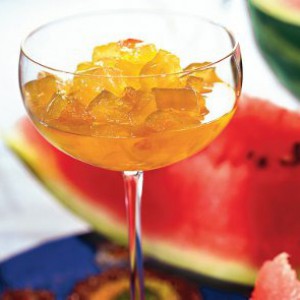 Watermelon Jam Jam
Watermelon Jam Jam